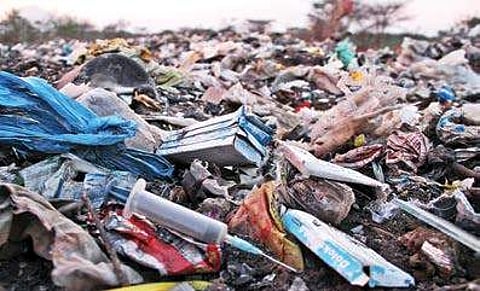

COIMBATORE: Finally, their worst fears have been confirmed. A three-year-long study undertaken by World Wildlife Fund (WWF) India underlined what environmentalists and locals of the Nilgiris have been crying hoarse about — water from River Bhavani is no longer safe for consumption. Not just the Bhavani, even the Kallar is in a bad state. A quick glance is enough to tell anyone that it is no longer a river, but a sewerage system for Coonoor town.
The WWF report, submitted to District Collector P Sankar by WWF landscape coordinator Boominathan and Osai president K Kalidass in Coonoor on Wednesday, was part of its work in the Western Ghats-Nilgiris Landscape. The study found that the upper reaches of the Bhavani and Moyar have been polluted by both Udhagamandalam and Coonoor municipalities and industries, including a government-owned factory.
Take the case of Coonoor town. With a population of 50,000, it generates about 5 million litres per day (MLD) of sewage, which is discharged untreated into the Kallar through a drain that joins near Runnymede station. The municipality lacks a treatment plant. Worse, the coliform bacteria levels found in the waters in Coonoor is 10 times higher than the permissible level stipulated by the Central Pollution Control Board (CPCB).
A cordite factory in Aruvankadu, which manufacturers nitro-cellulose and nitro-glycerine for ammunition, discharges its effluents into a small stream that eventually joins the Kallar. “The WWF has found effluents loaded with nitrates and aluminium, far exceeding the CPCB standards for discharge of environmental pollutants in inland fresh waters,” read the report titled ‘Water Quality Assessment in the Upper Reaches of the Bhavani and Moyar in the Nilgiris’.
The Bhavani does not fare well in Mettupalayam either. Pollution from the Kallar and Mettupalayam and ill-conceived hydropower projects have made its waters unsafe for use. Mettupalayam generates six to eight MLD of domestic sewage, which is currently being discharged untreated into the river.
Pollution is further exacerbated by two micro-hydel dams (10 MW each), recently built both upstream and downstream, converting the entire river stretch into a stagnant cesspool. “Our assessment shows significant decline in river water quality post commissioning of the dams in late 2015,” the WWF report said.
During the meeting with the Collector on Wednesday, it has been decided to form a stakeholder committee to address pollution related issues.
The committee includes Forest Department, Tamil Nadu Pollution Control board (TNPCB), Tamil Nadu Generation and Distribution Corporation Limited and local bodies. Representatives of these department also attended the meeting.
The TNPCB officials conveyed that they have already sent notices to the industries on setting up zero liquid discharge units within a month. The Collector said the administration will take up lake restoration projects and design treatment plants for both Ooty and Coonoor municipalities.
Coonoor’s coliform quagmire
With a population of 50,000, Coonoor town generates about 5 million litres per day of sewage, which is discharged untreated into the Kallar through a drain that joins near Runnymede station. The municipality does not have a treatment plant. Worse, the coliform bacteria levels found in the waters in Coonoor is 10 times higher than the permissible level stipulated by the Central Pollution Control Board